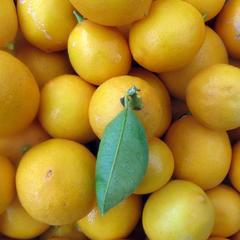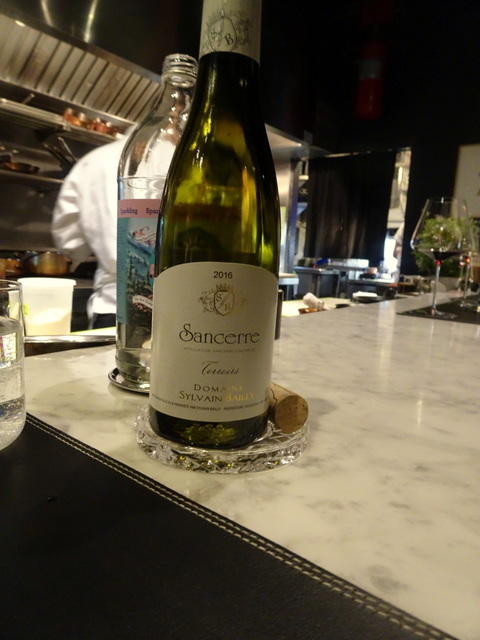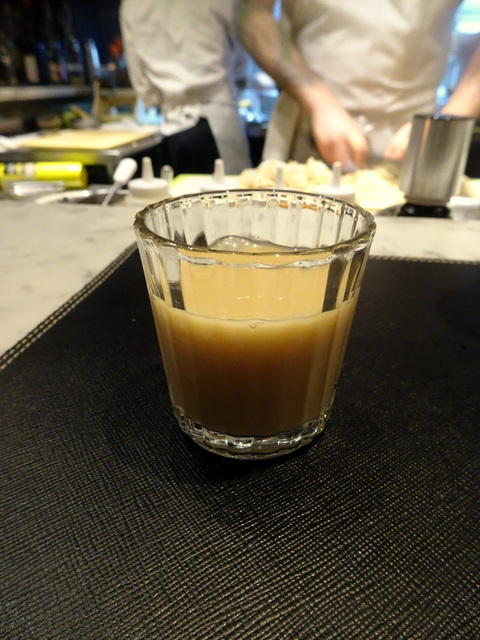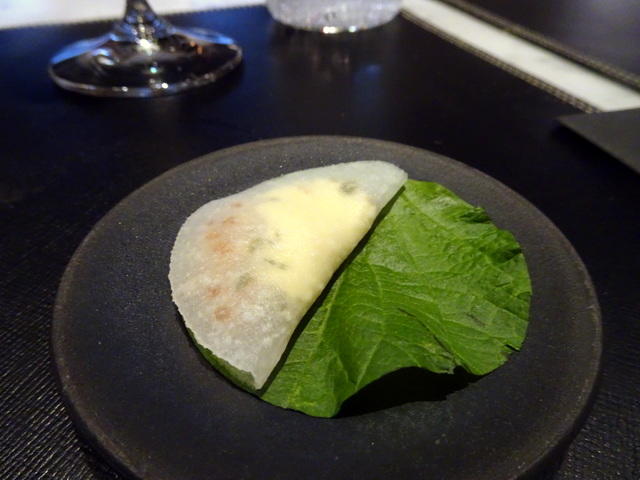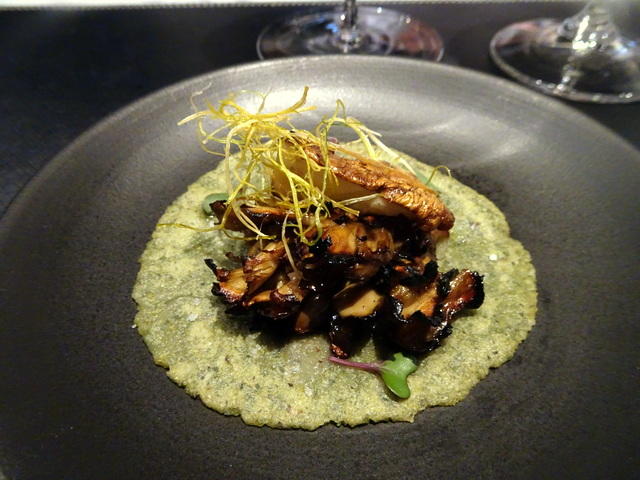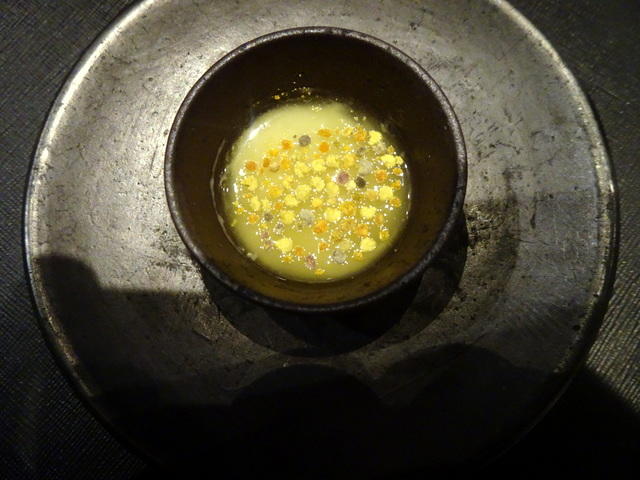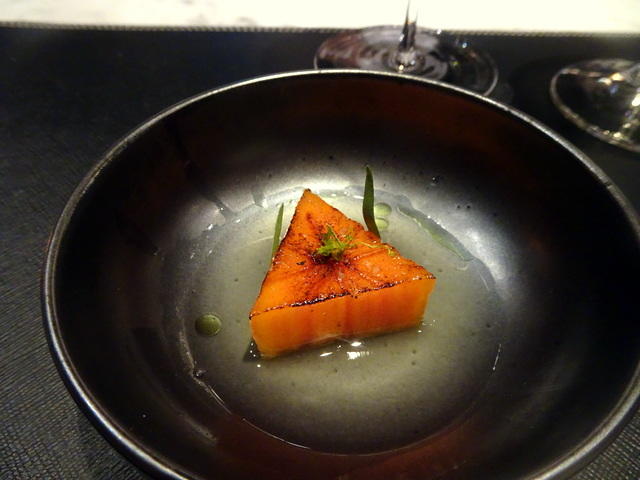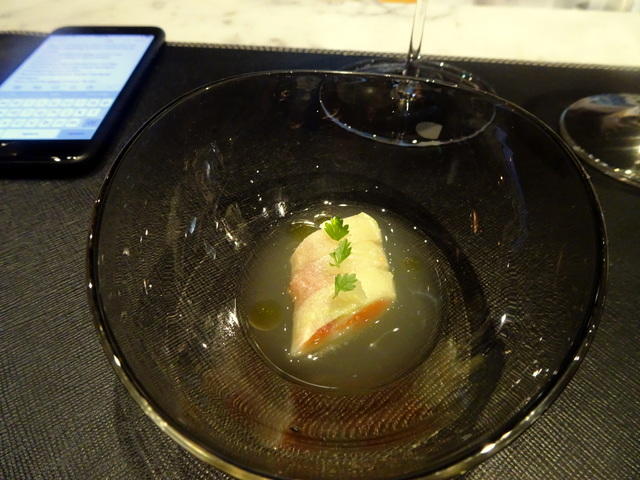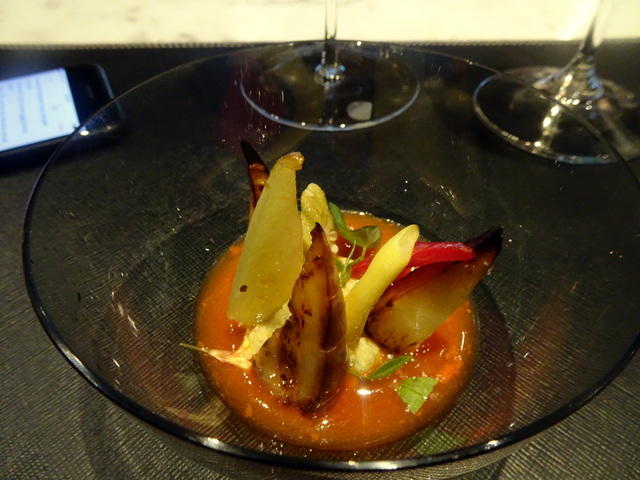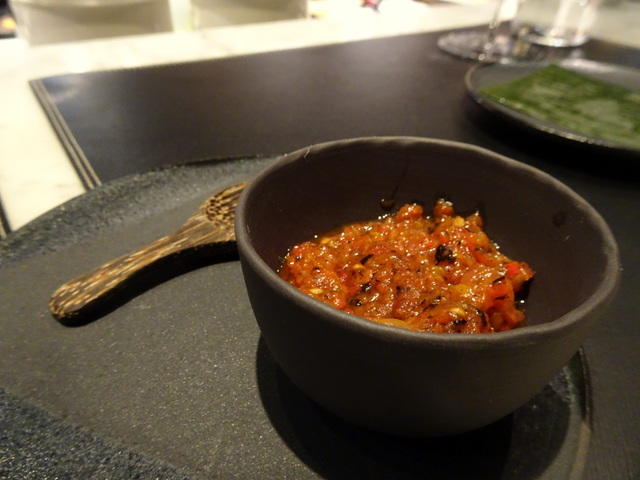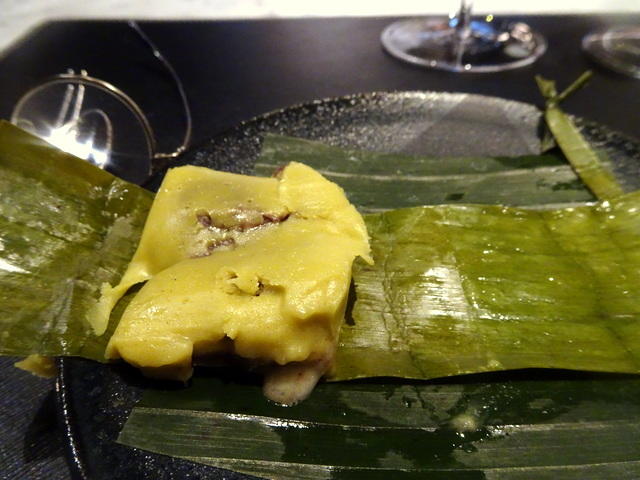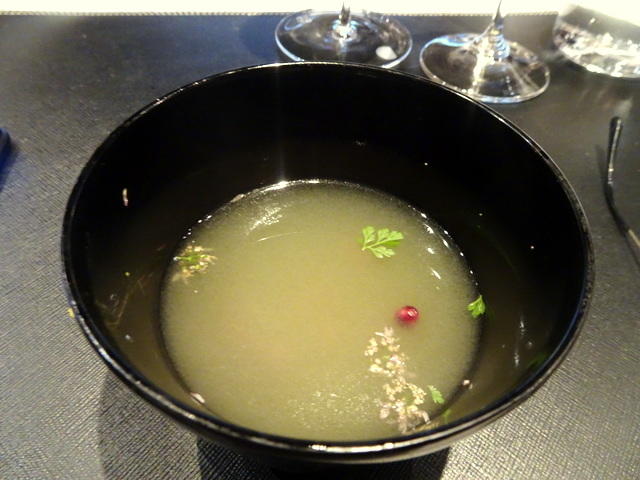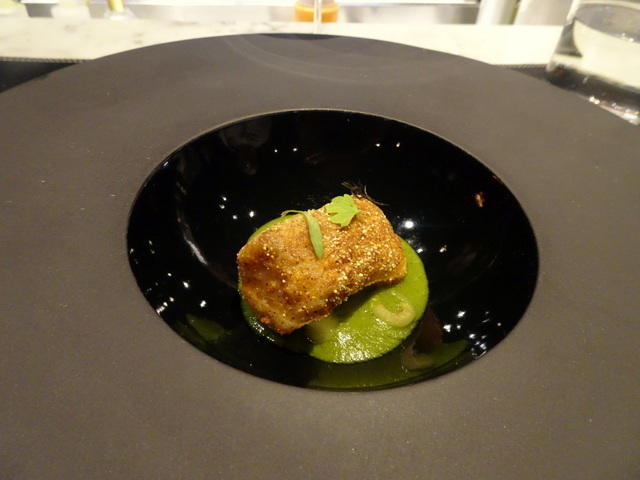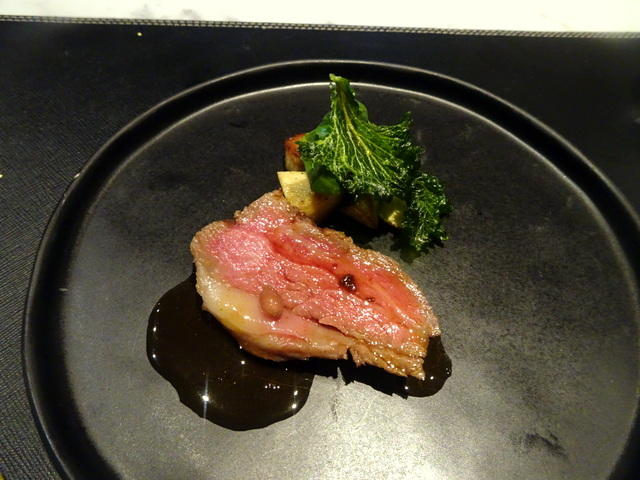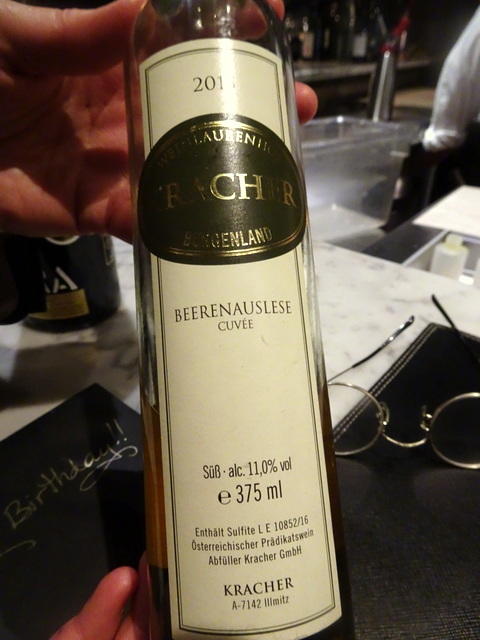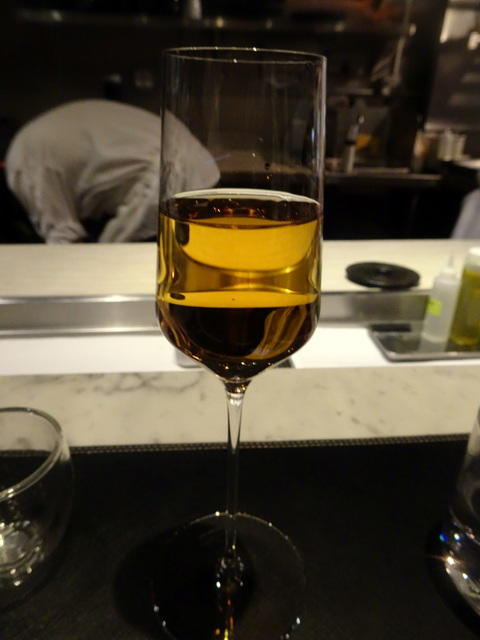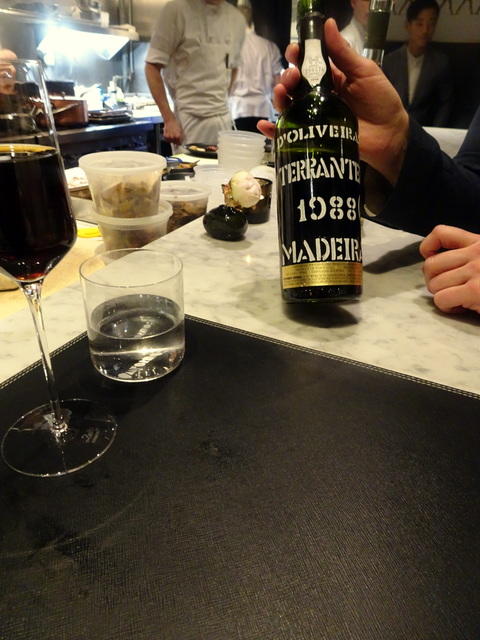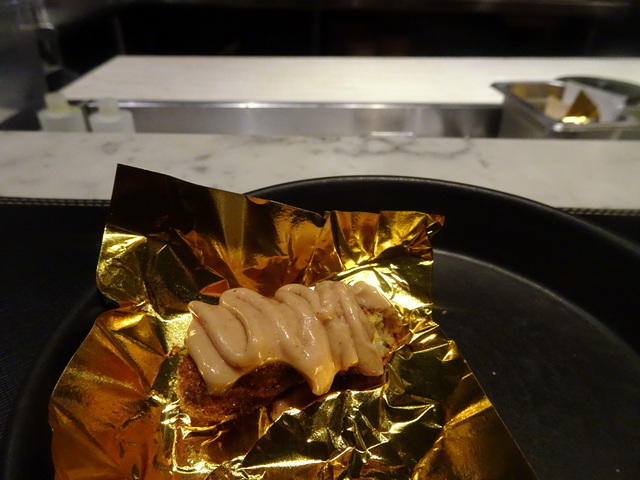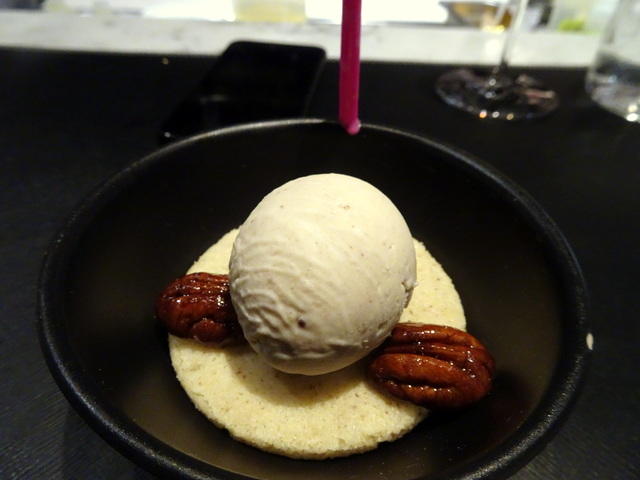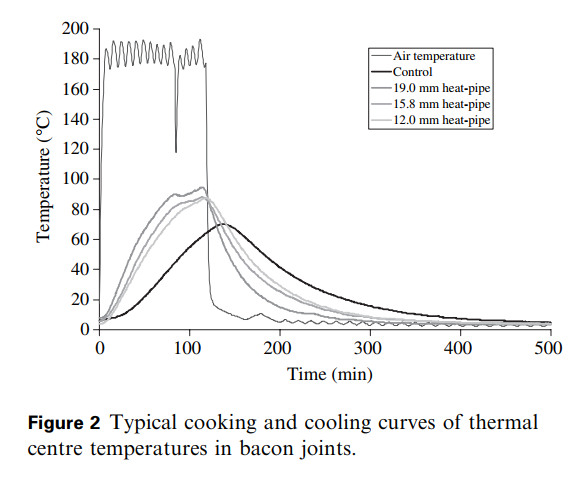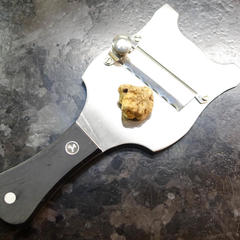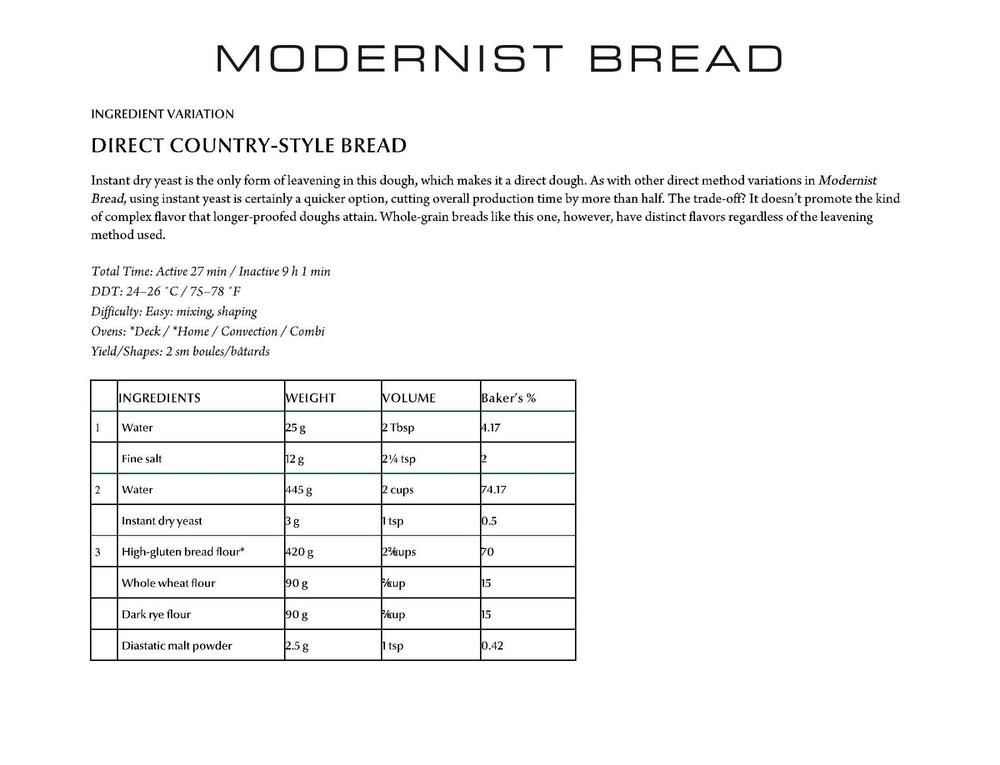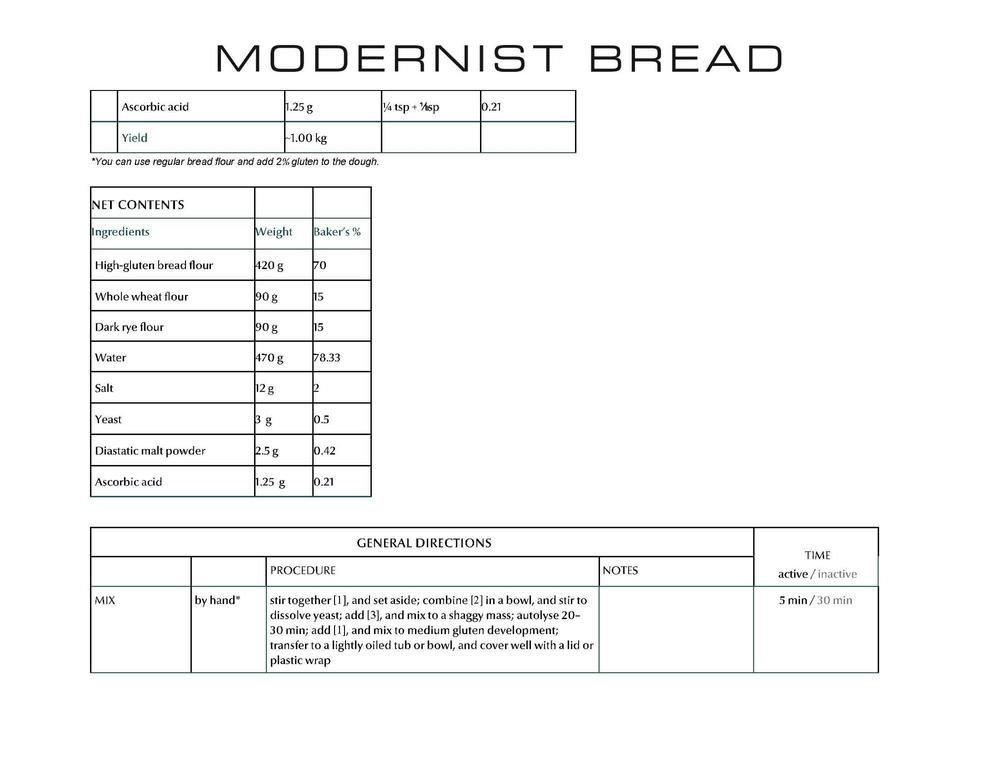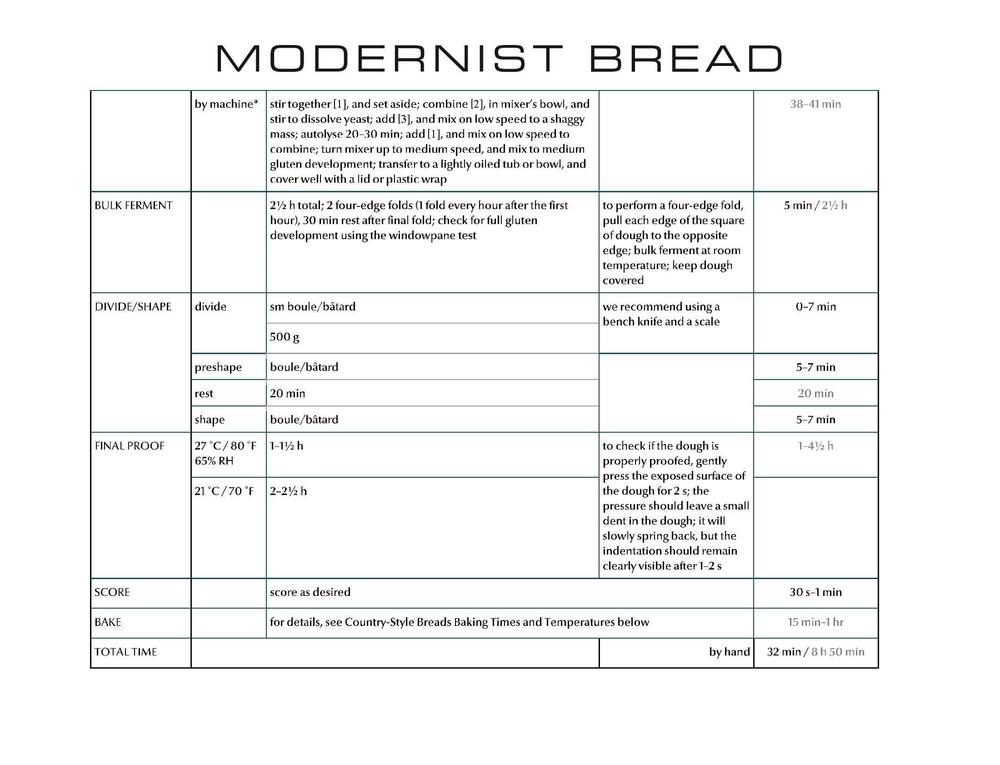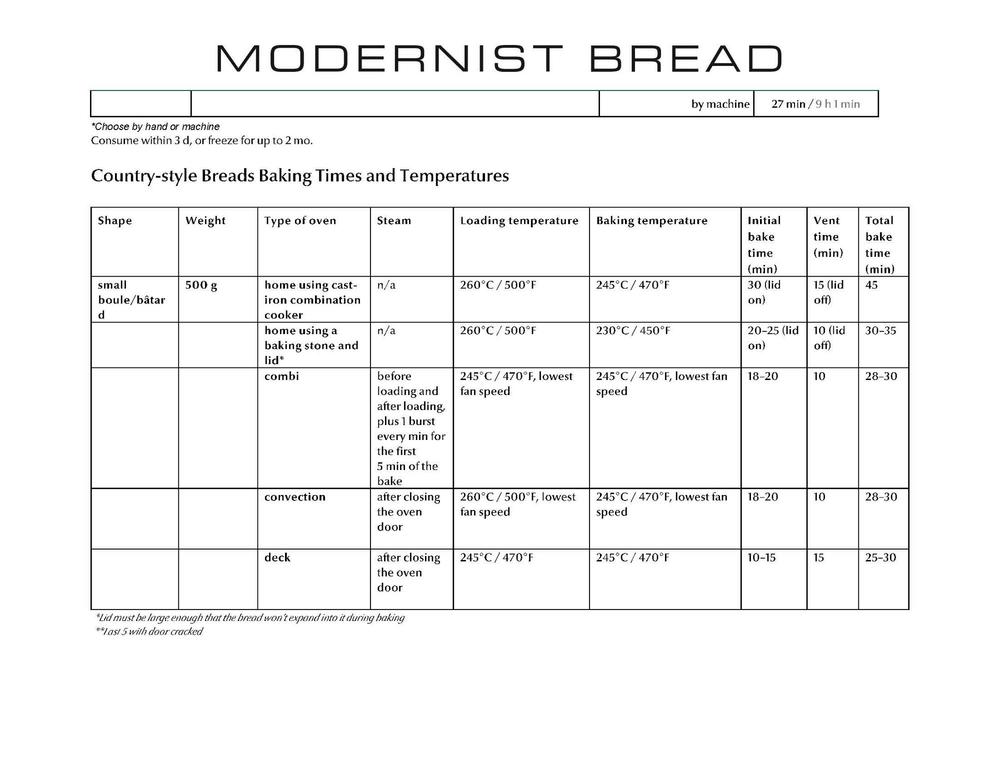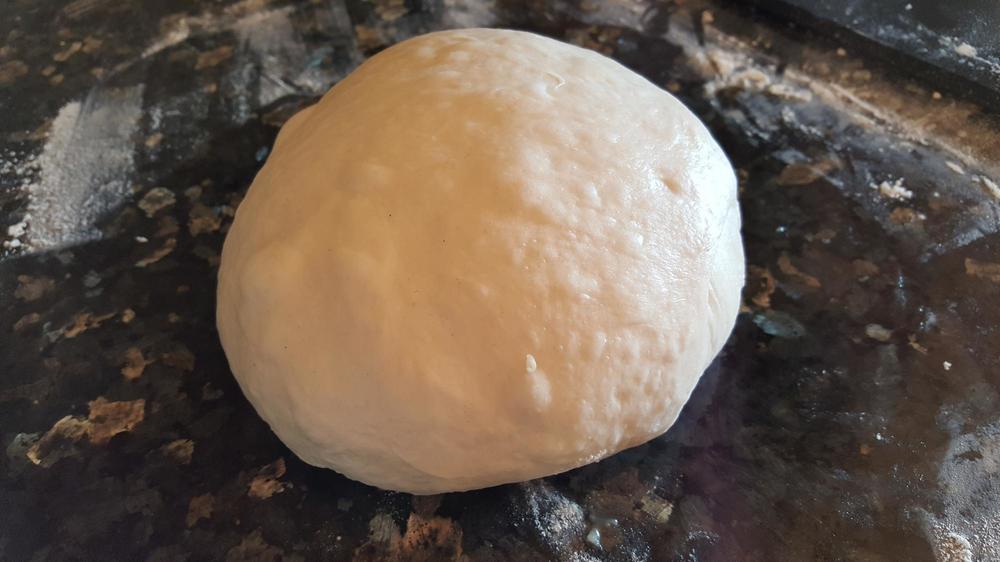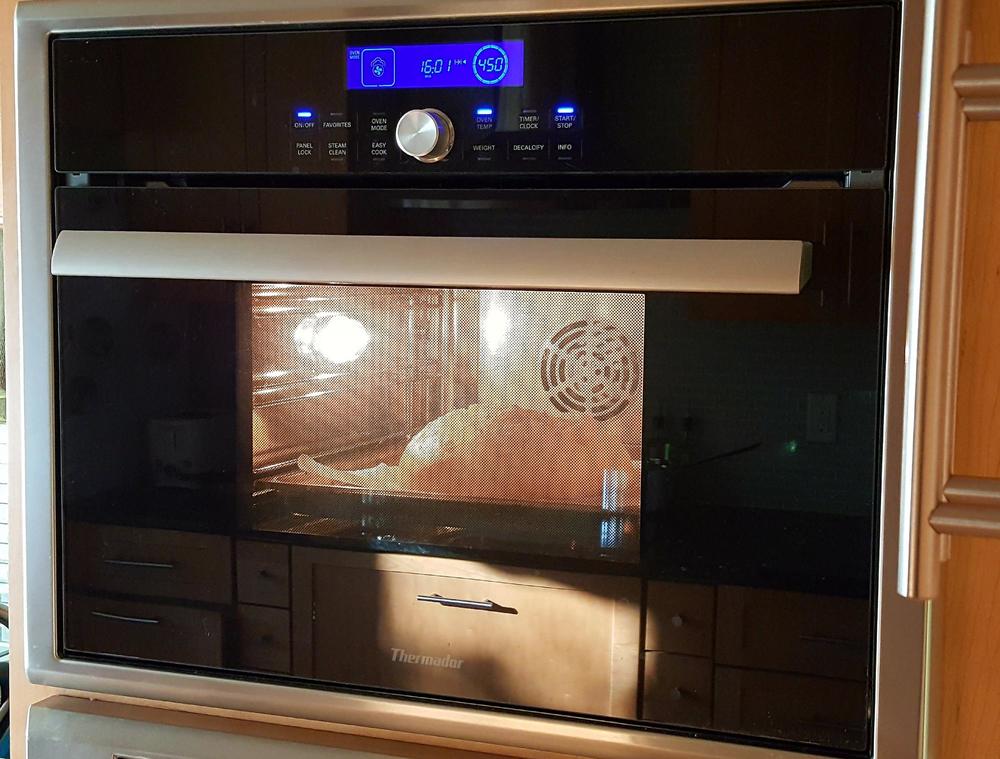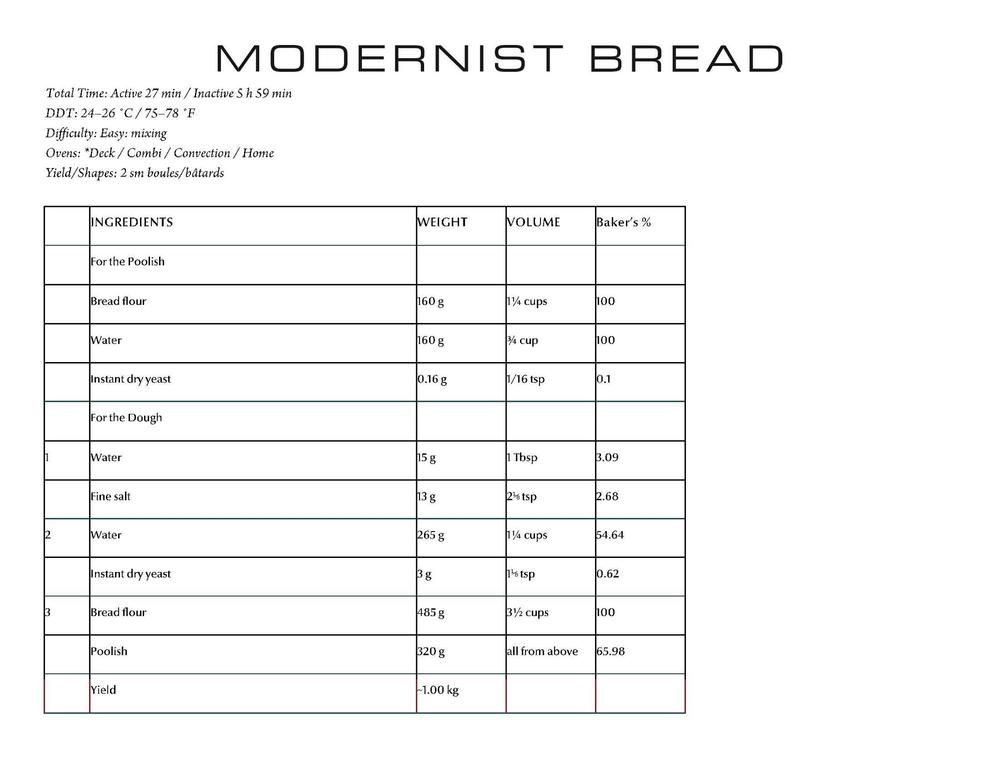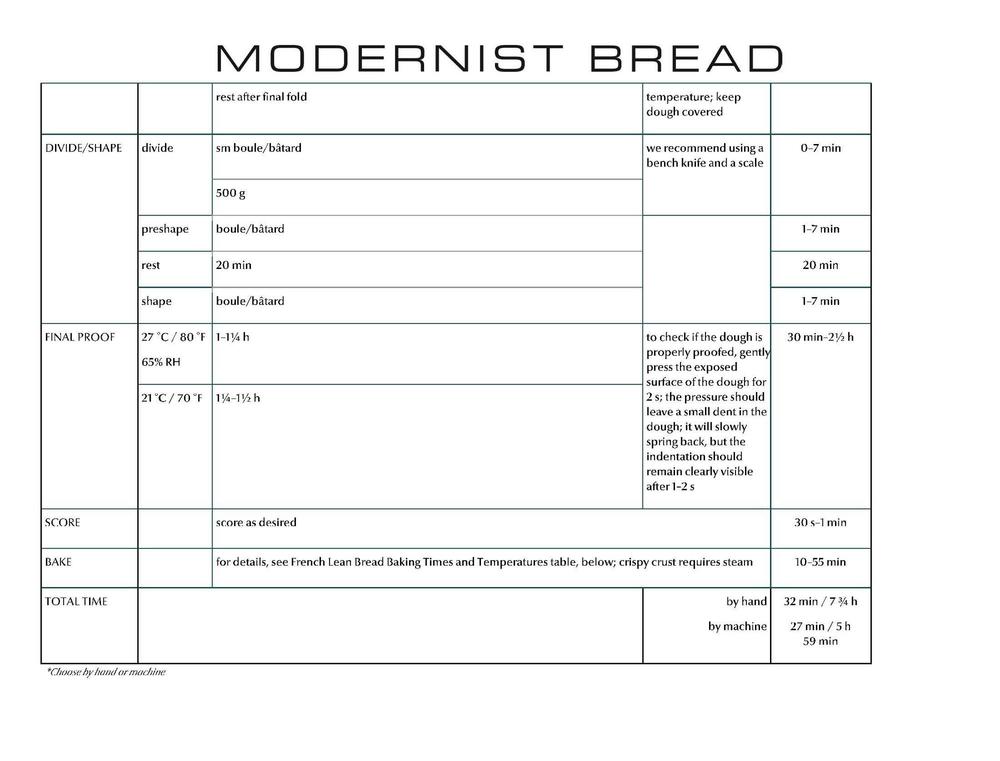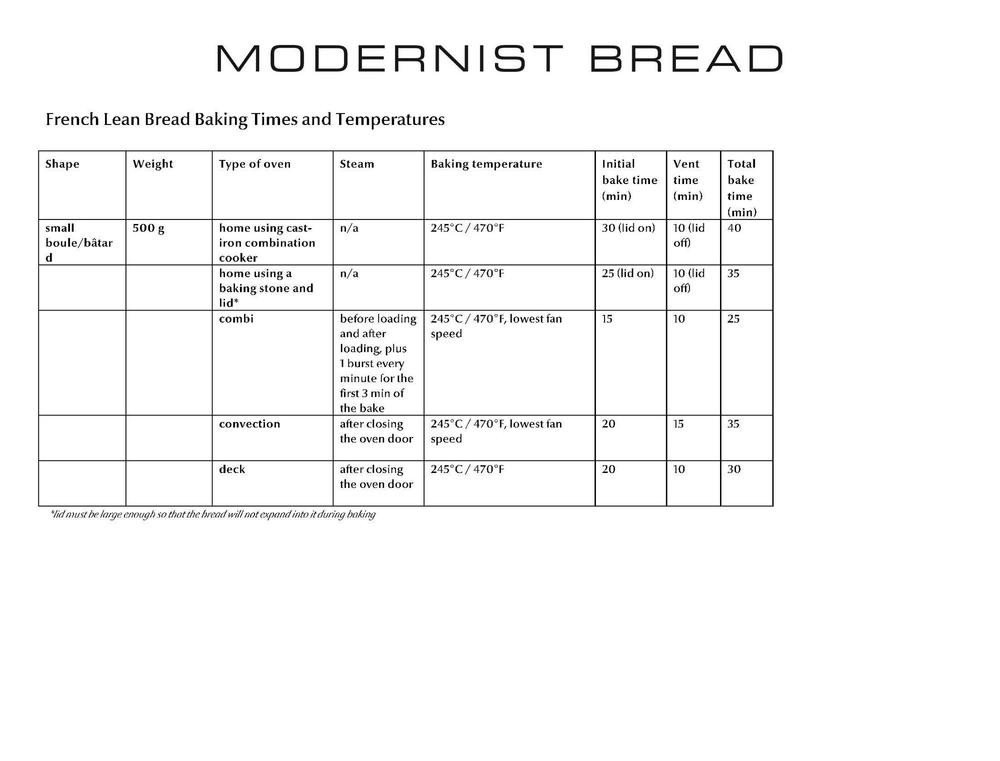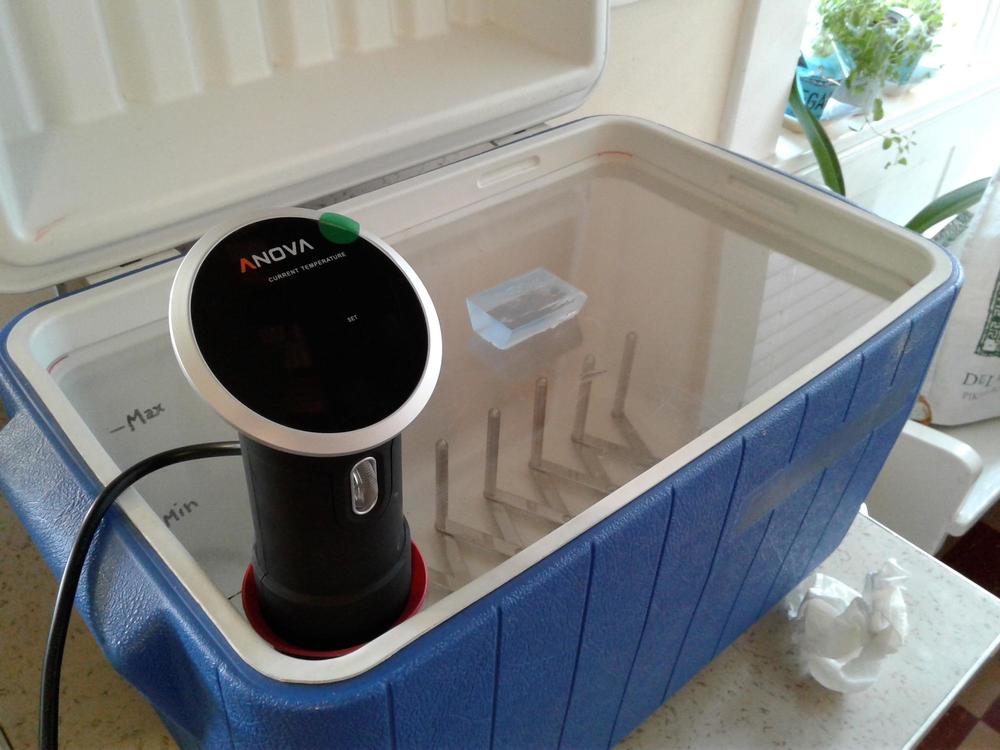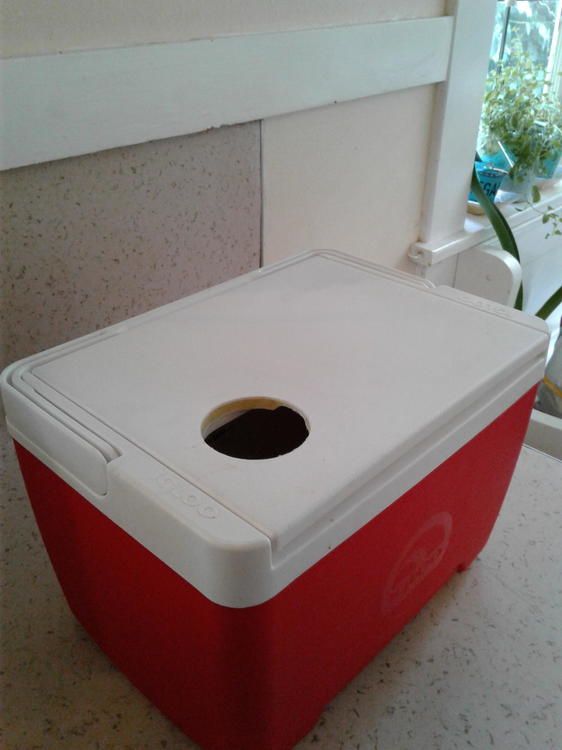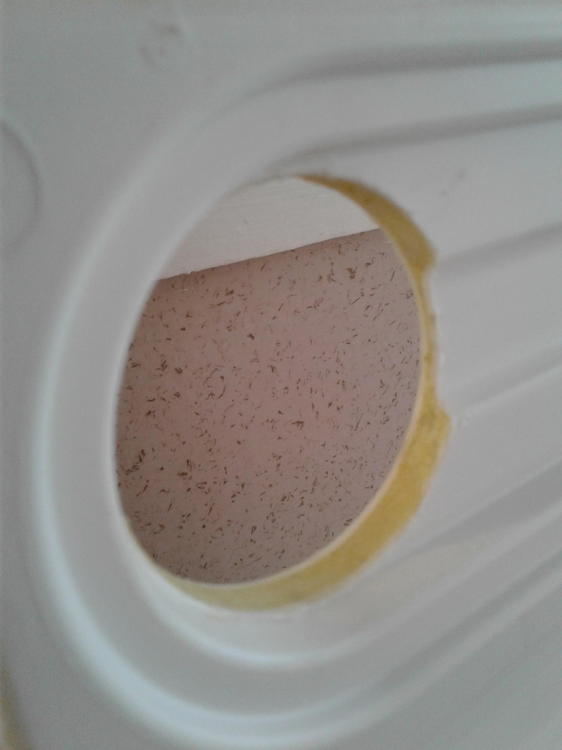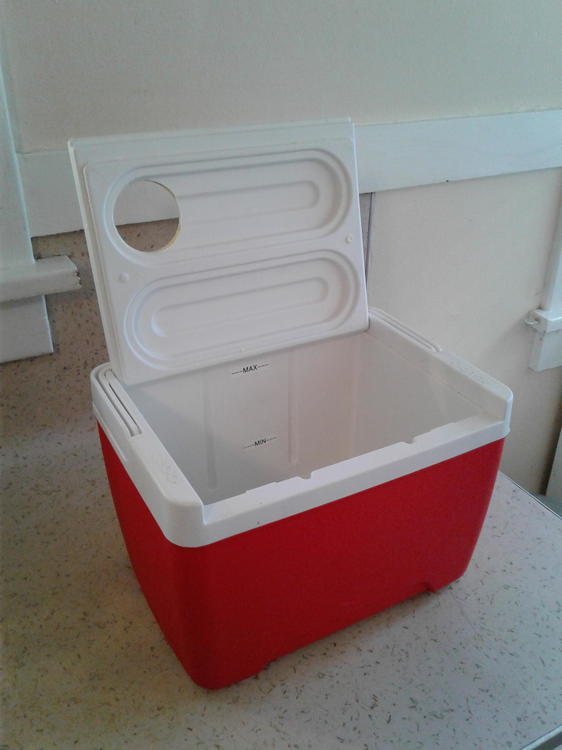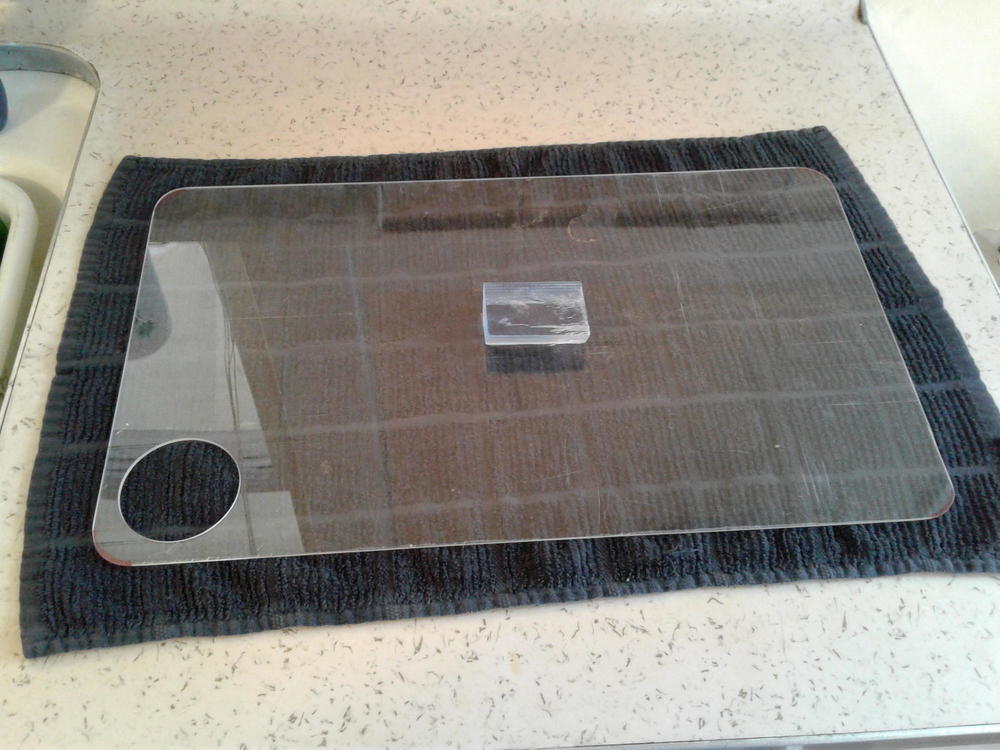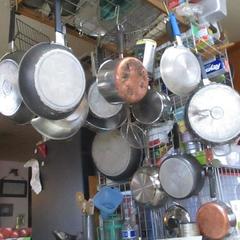Search the Community
Showing results for tags 'Modernist'.
-
With Modernist Cuisine I waited a couple of years and ended up with a copy from the 6th printing run the advantage of this was that all errors picked up in the erratta had been corrected in the print copy. I am looking to get modernist bread soon and wondered if someone had purchased it recently to check or if someone knew of hand if they have printed any additional corrected runs
-
I had completely forgotten about our dinner there in December. Anyone who is a serious eater here on eGullet needs to come here soon. Highly recommended. @MetsFan5 - here is one place you might love over Gary Danko. You too @rancho_gordo. I'll let the pix speak for themselves... Horchata - Koshihikari rice, almonds, black cardamom, cinnamon. Scallop chicharrón, scallop ceviche, crème fraîche. Jicama empanada, shiso, pumpkin, salmon roe. Smoked mushroom taco with pickled wild mushrooms. Dungeness crab tostada, sour orange segments, sour orange-habanero salsa, Castelfranco radicchio, tarragon. Pineapple guava sorbet Fuyu persimmon, habanero honey, tarragon Tasmanian trout ceviche, dashi, Granny Smith apple Aguachile, parsnip, red bell pepper Black bean tamales steamed in banana leaves, with salsa on the side Smoked squab broth, pomegranate seeds, cilantro flowers Tres frijoles with sturgeon caviar, shallots and edible gold leaf Black cod, salsa verde, green grapes Wagyu beef, pickled onion Smoked squab breast served with spiced cranberry sauce, quince simmered in cranberry juice, pickled Japanese turnips and charred scallion, and sourdough flour tortillas Yes, it's the same squab from which the broth was made. And now the desserts: Foie gras churro, with foie gras mousse, cinnamon sugar, served with hot milk chocolate infused with cinnamon, Lustau sherry and coffee. By the time I remembered to take a pic, I'd eaten half of the churro. Dunk the churro into the chocolate. Dulce de leche spooned atop pear sorbet with chunks of Asian pear, macadamia nut butter Pecan ice cream, candied pecans, shortbread cookie, apples, clarified butter The cookie was on top of the apples. Break the cookie and spoon everything over. Cherry extract digestif, vermouth, sweet Mexican lime We'll definitely return. I'm an instant fan. Prepaid tix were $230 per person, plus there were additional charges due to wine pairings. It's worth every cent you'll spend. Californios 3115 22nd Street (South Van Ness) Mission District
-
Hello, I love cooking my pulses and beans and have used a pressure cooker, slow cooker and top stove to do so. However, the results often vary due to my carelessness. I enjoy the results of sous vide and wonder whether cooking beans and pulses sous vide would make them deliciously tender without falling apart and going mushy. I have looked up a few recipes but the temperatures vary enormously. I'm wondering if there's a more scientific approach. Like, at what temperature do the walls of a pulse break down without breaking apart? And does the amount of water the pulses are steeped in matter? I'm gathering that pre-soaking is no longer the necessity it once seemed. So I'd love an understanding of the optimum temperature to get fluffy, unctuous beans without the mush. Any help or opinions greatly received.
-
I got an e-mail this morning about the Modernist team's next project - pizza! Modernist Pizza is Underway! After taking on the world of bread, we’re thrilled to announce the topic of our next book: pizza. Modernist Pizza will explore the science, history, equipment, technology, and people that have made pizza so beloved. Authors Nathan Myhrvold and Francisco Migoya, with the Modernist Cuisine team, are currently at work conducting extensive research and testing long-held pizza-making beliefs; this quest for knowledge has already taken them to cities across the United States, Italy, and beyond. The result of their work will be a multivolume cookbook that includes both traditional and innovative recipes for pizzas found around the globe along with techniques that will help you make pizza the way you like it. Modernist Pizza is in its early stages, and although we’ve begun to dig in, we still have a lot of work ahead of us. Although we can’t guarantee when it will arrive at your door just yet, we can promise that this book will deliver the complete story of pizza as it’s never been told before. In the meantime, we would love to hear from you as we continue to research pizza from around the world. Contact pizza@modernistcuisine.com to tell us about your favorite pizzerias and their pizza. Connect with us on social media to get all the latest Modernist Pizza updates.
-
Has anyone seen or heard anything about these? I've read in a bunch of Amazon reviews that people have reliability problems with Anova's later generation circulators. This one's for lab use, looks totally butch, and the price just came down by 50%, to $450. Anova scientific seems to do zero marketing. It looks bulkier than most of the consumer circulators, although it's not so easy to get an exact sense from the pictures. It might be less of a monster than the Polyscience circulators. And it now costs around half as much.
-
I have been tasked with putting together a team for a new kosher barbecue event in Arizona, happening sometime later this year. The event was supposed to be in mid-April, but the venue decided to cancel. The organizers are busy looking for a new venue, and have assured us that this will happen. Many details for the event are not quite settled yet, so, I am trying to prepare for all sorts of contingencies beyond the usual concerns about putting out good food. What is known is that we will be following the KCBS kosher rules. As far as I can tell, there were 10-12 such events held last year across the US. So, it's a pretty small world. I don't think there's a kosher championship ladder like the other barbecue events have, either. I think it's a good time to get in, get practice and see where it takes me. Now, I've been reading and watching videos online with all sorts of info on smoking/cooking for competitions. I have watched some of the TV shows, and one documentary. It's been kind of a mixed bag in terms of usefulness. No one has posted much about kosher barbecue, so I am making changes to recipes and procedures and running a lot of tests. I currently have access to my home kitchen which is small but adequate, the stove is electric and unremarkable and about 7 years old. It does maintain temperature well, and can be set to run anywhere from 140°F to 550°F. I also have access to an outdoor kitchen at a friend's place, with a relatively large charcoal type grill. At most of the kosher barbecue events the event organizers provide smokers/grills plus meats and many ingredients to ensure that everything is truly kosher. If needed, my team sponsor is prepared to purchase a grill/smoker which I will need to research once I know I will need it. I should note that I am not Jewish and did not grow up around any kosher households, so I am also studying some of the finer points about running a kosher kitchen and learning about kosher ingredients. Modern competition barbecue is an odd mix of modernist techniques and ingredients, right alongside ordinary-folk foods like margarine, and bottled sauces. For reference, the 4 categories for kosher events are: Chicken, Beef Ribs, Turkey, and Beef Brisket -to be served in that order. So far, I have been running smokeless tests on chicken and beef ribs. Mostly learning to trim the chicken thighs (what a nightmare!) and seeing what happens at certain temperatures and times. I know things will be different with real smoking happening, but I want to see some baseline results so that I know what to strive for. I do have a bunch of thermometers, and have got some basic ideas about writing a competition timeline. The chicken perplexes me in several ways. First, some of the competition cooks recommend boning while others recommend bone-in. Second, I see some folks injecting and brining, while others maybe do a quick half hour marinade, and even others are full-on modernist with citric acid under the skin, etc. Third, the braise vs non- braise chicken where some people load up their pan with a pound of butter, margarine or a couple cups of chicken stock while others do not. Fourth, The bite-through skin is driving me insane. Some people swear by transglutaminase to reattach the skin for a better bite. Catch is, only some types are kosher, and I can see having issues explaining it. I have tested an egg white egg wash which seems to attach the skin pretty well without showing. I think I need to go for longer times to get more tender skin. Today I did a pan (with olive oil) of six as follows: one hour at 220°, one hour under foil at 230°, then glazed and 20 minutes on a rack at 350°. It was only partly bite-though and the taste-testers wanted more crispiness. I tried showing them pictures and explained that it wasn't ever going to be crispy, that we're looking to go even softer. I am going to run tests on longer cook periods and see how it goes. I want to ask people about the whole swimming in margarine thing which is in voque right now. people claim it makes the chicken juicy. I know that meat is mostly all about temperatures. I can see how the margarine acts like duck fat in a confit and helps prevent some oven-drying after hours and hours in the oven, but, in the end, isn't it just an insulator? I've been making corned beef and other brisket dishes for over 20 years, so, I think I have a good handle on that. I will practice it in a couple of weeks. I simply don't need as much help on this item. The turkey scares me. On TV, I see people dunking it in butter before serving it. This obviously is not kosher, and I don't want to do it with margarine I don't want to present anything in a competition made with margarine, there has to be something better! -Either cook the bird better or find a better dip, like maybe a flavorful nut oil or a sauce. That said, unlike ribs or brisket, it is not traditional to dunk turkey in a sauce. I went with some friends to a chain place called Dickies to do a little research and their turkey breast was odd and kind of hammy. Not like Virginia ham, more like ham lunchmeat. It was very moist and unlike any turkey I have ever eaten. Ok, I admit to not being very fond of turkey, so my experiences with it have been a bit limited. I am assuming it was brined. Given the limited amount of time we will have (about a day and a half) to cook, I am planning on just cooking the breast. Other than that, I am open to suggestions. The internet has been least informative on the topic of turkey. People's videos and such just show rubbing the whole bird and letting it roast for a few hours. Any tips at all would be appreciated. Whew! Thanks for reading all of this, I look forward to any advice you can give.
-
I've had the CSO for a number of years now, but have yet to actually bake bread in it. Reading through the Modernist Bread thread on this forum I see many of you are using the CSO to great effect, which is heartening. To that end, I would like to know about your experience baking bread in it – what sort of extra equipment you use (pans, cast iron? etc), what breads work the best, any corrections you find yourself making, or anything you feel might be useful to someone else using the CSO. Thank you!
-
The space race trickled into kitchens in the 60s and 70s, including one curious tool that's faded away in the years since: the thermal pin, a heat pipe skewer that can halve cooking times for roasts: Heat pipes are thermal superconductors, transferring heat 500-1000 times more effectively than solid copper (some people in the sous vide thread have discussed copper pins). They're hollow tubes with the air evacuated and a small amount of working fluid, often water. The usable temperature range is limited by the triple point and the critical point, with additional constraints near the edges. Water is effective from 20C-280C /70F-530F, which comfortably spans most cooking temperatures. Modernist Bread has an excellent section on how bread bakes, including a diagram of the internal heat pipes that develop, summarized here. (click for a good photo!) Sous-vide solves the overcooking side of the gradient problem, but it's still limited by total heat diffusion time-- doubling the size of a cut quadruples the time needed for the center to reach temperature. Heat pipe pins should make larger cuts practical, or normal cuts cook faster. Here's a graph from "The heat pipe and its potential for enhancing the cooking and cooling of meat joints", showing average temperatures over time for 1kg joints of meat convection baked at 190C/375F for 110 minutes (foil removed for the last 30 minutes): Thermal pins were sold commercially from 1956 to about 1990. They're listed occasionally for about $20 on ebay. They even made potato baking racks with heat pipes-- though now you can easily par-cook a potato in the microwave and finish it in the oven. I don't know why production of thermal pins stopped, or what fundamental problems limited their usage. It seems like pans and commercial griddles would be improved by adding heat pipes to spread heat throughout and avoid hot or cold spots. Perhaps roasts fell out of favor as the culture of entertaining shifted away from monolithic centerpieces to smaller, more precisely cooked portions.
-
Hey there, i hope to find some help in the wise hands of yours. after some research i am still having some problems concerning glazing: For a party i would like to make some cubes and rounded savoury cakes and foams out of silicone forms that have a ready bottom and a colour glazing. Somehow i just do not manage to find a steady glazing ( one that does not run ) and is for texture reasons preferably hard or crisp that does not include sugar or syrup. can you help me or lead my way in a certain direction? thanks very much!
-
Having experienced the "Edible Balloon" dessert at Alinea, I have been on a quest to try this at home. Only recently was I able to find purportedly a recipe: https://www.buzzfeed.com/raypajar1/these-edible-helium-balloons-are-dessert-from-the-future?utm_term=.ut6r3PnMk#.acGNVWmd6 the video of which is found below. I tried this and probably no surprise, it failed. The bubble collapsed / popped with only a little distension. I wasn't sure if the problem was that a "secret" ingredient (e.g. some kind of surfactant to stabilise the bubble or using a different kind of sugar) was missing. Or maybe I didn't allow the mix to come to correct temperature etc. Elsewhere I thought I had read that the original recipe was in effect some kind of taffy. Has anyone else had success, or do any candy makers /modernist chefs, have suggestions they are willing to share?
- 13 replies
-
- Modernist
- Troubleshooting
-
(and 1 more)
Tagged with:
-
Is there a discussion in the book about the purpose of adding ascorbic acid? I just saw the contest #2 in which the recipe called for it. I'm curious because a woman I know on the internet used to work in a bakery in Vietnam, and said that to get similar results to the banh mi there, you need to add ascorbic acid. Does it act as a gluten relaxer? Traditional banh mi have a very tender and crisp crust, and a very light and tender, relatively closed crumb.
-
Modernist Bread is out now, but maybe you haven't taken the plunge. Here's your chance to win your own copy, courtesy of the eGullet Society for Culinary Arts & Letters. The Cooking Lab has provided us with a couple of other prizes that will go to a second and third winner: second place will win an autographed poster and calendar, and third place will receive an autographed poster. They are also providing an autographed bookplate for the first place winner's copy of Modernist Bread. The rules are simple: we are going to post recipes from the book that the team at The Cooking Lab has graciously provided for this purpose. To enter into the contest, you need to bake one or more of these recipes and post about them in the official contest topics by the end of November 2017. Winners will be drawn at random from those posting pictures and descriptions of their completed loaves. Complete rules and other details can be found here. For part two, we're featuring another cornerstone recipe from the book: Direct Country-Style Bread. The only leavener here is instant yeast, so production time is considerably shortened. The relative lack of flavor compared to long-proofed doughs is offset by the use of whole grains. Courtesy of The Cooking Lab, here's that recipe (extracted from the book and reformatted for purposes of this contest):
-
HOST'S NOTE: This post and those that follow were split off from the pre-release discussion of Modernist Bread. ***** Figured I don't need to dump all this into the contest thread - so I'll post here. My journey to making my first MC loaf. Her's the poolish after >12 hours: Not pictured - water with yeast in it below the bread flour and poolish That went into the mixer and not long later I had a shaggy mass: That rested for a while - then mixed until medium gluten formation - a window pane that was both opaque and translucent (no picture for that slightly messy part) Folded and rested, folded and rested, I think this is 1/2 the mass now ready to rest one final time. Proofed it in the oven - I have a picture of that but it's just foggy window oven Then it went into the oven, here it is at max temp - 450 with steam turned on. Completed loaf: \ And the crumb - this is awesome bread:
-
Next week marks the official release of the highly-anticipated Modernist Bread by Nathan Myhrvold and Francisco Migoya. The eGullet Society for Culinary Arts & Letters is excited to provide you with the opportunity to win a copy of the book. The Cooking Lab has provided us with a couple of other prizes that will go to a second and third winner: second place will win an autographed poster and calendar, and third place will receive an autographed poster. They are also providing an autographed bookplate for the first place winner's copy of Modernist Bread. The rules are simple: we are going to post recipes from the book that the team at The Cooking Lab has graciously provided for this purpose. To enter into the contest, you need to bake one or more of these recipes and post about them in the official contest topics by the end of November 2017. Winners will be drawn at random from those posting pictures and descriptions of their completed loaves. Complete rules and other details can be found here. For our first recipe, we're starting with a cornerstone recipe from the book: French Lean Bread. I've personally made this one and it's both delicious and completely approachable by anyone with an interest in this book. Courtesy of The Cooking Lab, here's that recipe (extracted from the book and reformatted for purposes of this contest): The recipes in this book tend to rely on information presented more extensively earlier in the books, so if anything isn't clear enough here please ask and Dave and I will do our best to answer your questions (we've had early digital access to the books for the last month or so). ETA: Here's what my first go at the recipe sounded like coming out of the oven...
-
OK, someone in an earlier thread asked me to post photos of this effort to make insulated, evap-resistant bathtubs for my new Anova ciculator. I decided to make two. The first was to just use my medium-sized Coleman PolyLite 40Q cooler. This is my Go-To grocery cooler, so I didn't want to sacrifice it just for SV, so I cut a plexiglass scrap into a cover that sits down inside on the cooler's interior rim, and then hole-sawed the corner of the clear plexi to accept the Anova. Someone specc'd the hole at 2.5" diameter, but I found that's a bit too large. 2-3/8" or 2-7/16" diameter would probably have been better. I solved the issue by adding a toilet flush gasket that seals the hole and stabilizes the Anova. The second was a smaller 9Q Igloo picnic cooler I never used, is only $15 new , and therefore didn't mind sacrificing. This I hole-sawed directly through the cooler's removable lid. Because the lid was hollow, I sealed the thing up with squirt foam and silicone caulk. The gasket seals this one, too, just moving from one cooler to the other with the Anova. So far, after a few uses, I can say that the setups hold heat extremely well, and don't lose much water by evaporation. The 40Q only dropped a few degrees after being banished to the back porch overnight in 40F weather. It would not have taken much time or juice to get it back on-temp. I'll break out the Kill-A-Watt later, and compare energy use. Cost was $6 for the IKEA rack, and $3.49 for the gasket. I had everything else.
-
I thought that I had read that if you SV in bulk, and the freeze, that you were supposed to SV the item again based using the same time in the bath as when you first cooked the item. I tried SVing 4 meals's worth of pork strips and froze 3 of the 4. When I re-SV'ed a package last night (at a slightly lower temp to not increase the doneness, they were borderline dry, way different than the first package right out of the bath. What am I missing?
-
And they'll all soft-boil an egg in 45 minutes. How did anyone manage without sous vide?
-
Yes, the vacuum blender, Luddites. http://www.gadgetreview.com/what-is-a-vacuum-blender I am waiting for the WiFi version, so I can turn my smoothie into soup from Mars.
-
Solid intermediate cook, here. Not especially intimidated by elaborate preps. But I'm new to SV, and would like a recommendation for a cookbook for guidance and exploration. I was thinking of Tom Keller's Under Pressure, but I'm wondering if the preps he includes may not be the most generally useful. What do you all like, and why? Thanks!
-
On Nov. 7, 2017, Modernist Bread will finally arrive on my doorstep. Having preordered it literally the first day it was available, to say I'm excited about this book is a bit of an understatement. The team at The Cooking Lab have been gracious enough to give @Dave the Cook and me early electronic access to the book and so I've spent the last week pouring over it. I'm just going to start with a few initial comments here (it's 2600 pages long, so a full review is going to take some time, and require a bunch of baking!). Dave and I would also be happy to answer any questions you've got. One of the main things I've noticed about this book is a change in tone from the original Modernist Cuisine. It comes across as less "everything you know is wrong" and more "eighty bazillion other bakers have contributed to this knowledge and here's our synthesis of it." I don't think it's an exaggeration to say that Myhrvold and company are now the most experienced bread-bakers in the world. Not necessarily in terms of the number of identical loaves they've produced, but in the shear number of different recipes and techniques they've tried and the care with which they've analyzed the results. These volumes are a distillation of 100,000 years of human breadmaking experience, topped off with a dose of the Modernist ethos of taking what we know to the next level. The recipes include weight, volume, and baker's percentages, and almost all of them can be made by both a home baker and someone baking in a commercial facility. The home baker might need to compromise on shape (e.g. you can't fit a full-length baguette in most home ovens) but the book provides clear instructions for both the amateur and professional. The recipes are almost entirely concentrated in volumes 4 and 5, with very few in the other volumes (in contrast to Modernist Cuisine, where there were many recipes scattered throughout). I can't wait for the physical volumes to arrive so that I can have multiple volumes open at once, the recipes cross-reference techniques taught earlier quite frequently.
- 171 replies
-
- 11
-

-
Im wondering if anyone here as tried to age a steak w fish sauce. consider : using fish sauce to age steaks if this doesn't give you an interesting list , just type in the above w Google. I finally go around to trying this w RedBoat40 and a thick sirloin strip. then SV my results are here : note the ModernistCuisine method in one of the first links 3 days sealed , 3 days cheesecloth , conventional cooking. I only did my steak one day in the RB40 , then SV if you like ' aged ' tasted , try some sort of variation. if you have tried this : how long did you leave the steak w the sauce in the refrigerator ? next time Ill add a little more RB40 initially and leave it for three days. Im unlikely to try the cheesecloth additional time. has anyone done this ? I might even try it on bland flavorless skinless boneless CkBr's
-
Wonder if someone could get me in the ballpark..the amount of Transglutamase...to make scallop noodles.. % I mean ill use a food processor..to purée the scallop.. then inject into a water or broth..to cook?
-
Hi, I've tried to make the spherical mussels recipe from the Modernist Cuisine books and it didn't work as I expected, so I would appreciate any advice that may help here. The recipe calls for calcium gluconate which I couldn't get hold of, so I replaced it with calcium lactate gluconate that I had at home. I used the same ration (2.5%) When I tried to create the spheres in the sodium alginate bath I encountered two main problems; 1. instead of spheres the mixture just stayed as uneven shape on the surface. The bath was 1Kg. water with 5gr. sodium alginate and I let it rest in the fridge for 24 hours before using it so I think the problem is not here. However, the mussels jus mixture (100gr. mussels jus, 0.5gr. xanthin gum and and 2.5gr. calcium lactate gluconate) had a lot of air bubbles in it. Can that be the issue? 2. In the book the spheres seem to be completely transparent whereas my mussels jus mixture was pretty white and opaque. Is it because I replaced calcium gluconate with calcium lactate gluconate? Or maybe it's because the jus itself should be clarified before it is used? Thanks in advance for your support, Tom.
-
Good afternoon everyone! I currently own a MiniPack MVS31x chamber style vacuum sealer and am wondering if a Polycience vacuum canister will work in my machine? The intended use is for making a larger batch of aerated mousse.
-
Hello! I was wondering if anyone on here has tried using an induction cooktop with confection making (caramels, fondant, marshmallows ect...). My stove has literally three settings, and the low setting still burns sugar and there is no such thing as maintaining any sort of "simmer". I was looking into getting a cooktop and buying some copper sugar pots and mauviel makes this thing that goes inbetween. I would love to hear any input into this idea or your experiences! ~Sarah
- 2 replies
-
- Chocolate
- Confections
-
(and 3 more)
Tagged with:

